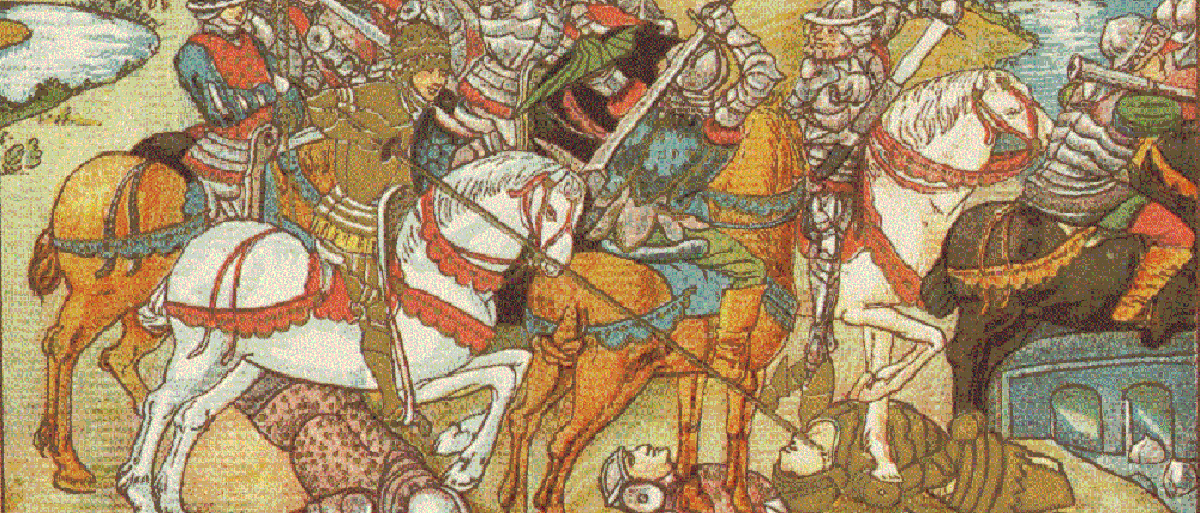Battle of Barnet
Posted on 9th January 2021
The Battle of Barnet was fought on 14 April 1471 close to the town of Barnet, 12 miles (19 km) from London.
Richard Neville, Earl of Warwick had been a great ally of Yorkist Edward IV. He had been involved in the overthrow of King Henry VI and the crowning of Edward as king, however he and Edward IV fell out, following Edwards marriage to Elizabeth Woodville, and Warwick defected to the Lancastrian side; he now fought against Edward IV.
Edward had previously taken refuge in Burgundy, France, but now returned with an army formed with the help of the Duke of Burgundy. He landed in Ravenspurn, Yorkshire and marched towards London, gathering troops and swelling his ranks as he went.
The Lancastrian and Yorkist forces would meet at Barnet.
The Lancastrian army arrived first and Warwick positioned them in a line on a ridge of high ground to the north of Barnet. John de Vere, Earl of Oxford was in charge of the right flank, Henry Holland, Earl of Exeter in charge of the left and John Neville, Marquess of Montagu in charge of the centre; Warwick commanded the reserves.
Edwards Yorkist army arrived. William, Lord Hastings led the left with Richard, Duke of Gloucester leading the right flank. Edward and George, Duke of Clarence led the centre with reserves held at the back. Clarence was kept close to Edward, maybe to keep an eye on him as Clarence was not known for his loyalty.
With the armies being deployed at night, neither could see their opposition, but both were aware of their general location. During the night, the Yorkist army crept closer to the Lancastrians.
Warwick ordered a cannon bombardment overnight, but their cannons were overshooting the Yorkist position, as the Yorkists had already crept closer.
The Lancastrian leaders including Warwick himself decided to leave their horses and fight on foot, showing support to their own forces.
With the movement overnight, the armies were not placed opposite each other, but were offset to the right. This gave an advantage and the Lancastrians were the first to exploit it. The Earl of Oxfords men overwhelmed Lord Hastings Yorkist soldiers on the left and they fled towards the town of Barnet, continually chased by the Lancastrians.
Battle visibility was poor and the main forces hadn’t noticed Oxfords victory over Hastings. The Lancastrian left was suffering much the same as the Yorkist left, with Gloucester beating back the Earl of Exeter.
The entire battle line had rotated, seeing this Warwick sent most of his reserves to assist Exeter, and the rest he took to fight in the centre.
Oxford, having chased fleeing Yorkist soldiers, now returned, but due to the mist, he arrived to the rear of Montagu’s force. Oxfords banner was mistaken for Edwards and Montagu’s men started firing arrows mistakenly at what they believed were their enemy. Cries of ‘Treason’ were heard and the Lancastrian forces started to flee, leaving gaps in the line.
Edward saw the collapse of the Lancastrian army and sent in his reserves. The Lancastrian army were routed. Both Richard, Duke of Warwick and his brother John Neville, Marquess of Montagu were killed.
Battle of Barnet
Fought - 14 April 1471
Location - North of Barnet, London
Participants - House of York and House of Lancaster
Army
York 7,000 - 15,000
Lancaster 10,000 - 30,000
Leaders (York)
Edward IV
Richard, Duke of Gloucester
William, Lord Hastings
Leaders (Lancaster)
Richard Neville, Earl of Warwick
John Neville, Marquess of Montagu
Henry Holland, Duke of Exeter
John de Vere, Earl of Oxford
Victory - House of York
Casualties
1,500
Richard Neville, Earl of Warwick (Lancaster)
John Neville, Marquess of Montagu (Lancaster)
Tagged as: Junior Middle Ages
Share this post:





